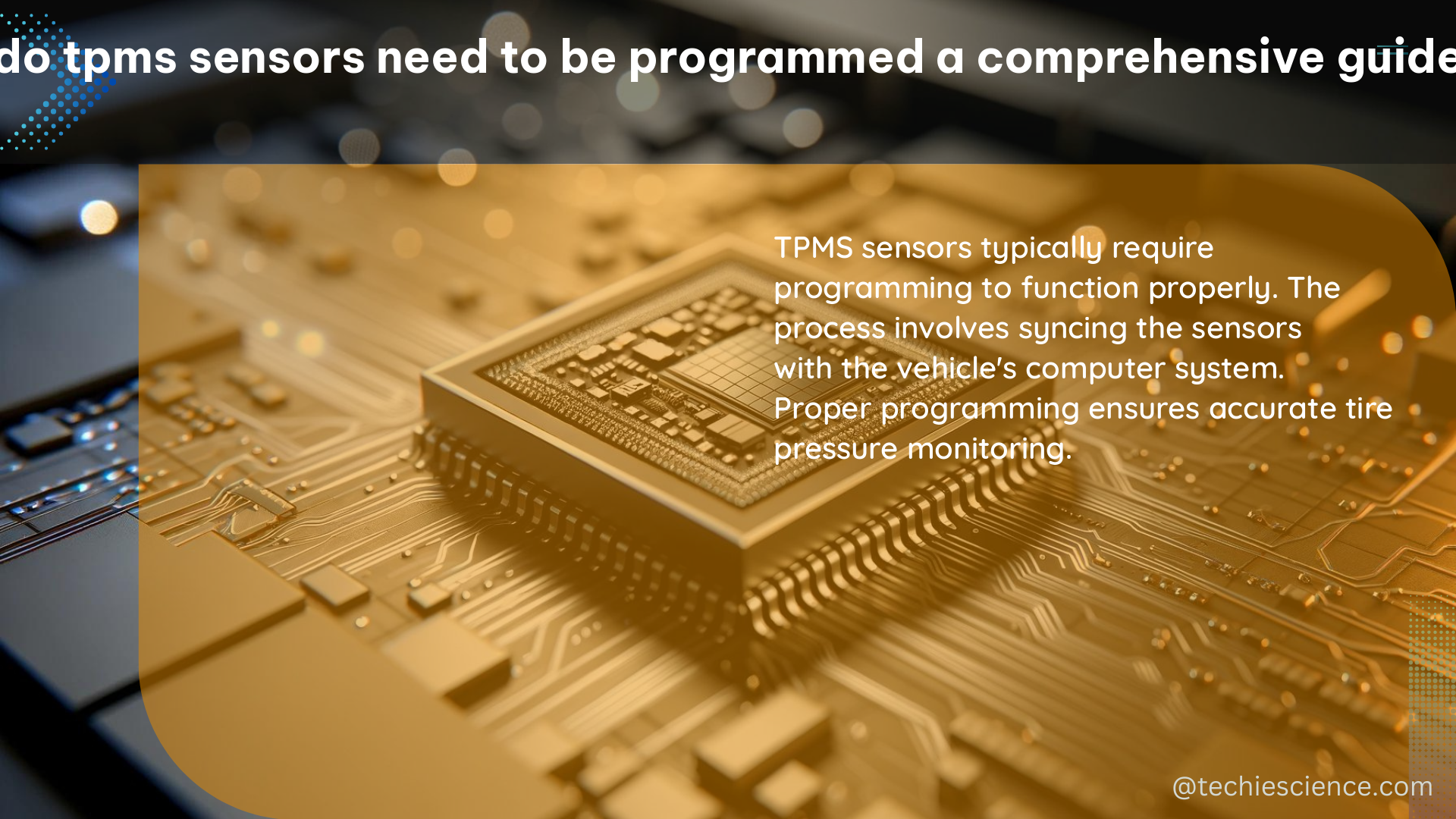Tire Pressure Monitoring Systems (TPMS) are an essential safety feature in modern vehicles, designed to alert drivers when tire pressure drops below a certain threshold. While TPMS sensors are generally pre-programmed by the manufacturer, there are instances where they may need to be programmed or initialized, depending on the vehicle make, model, and the specific situation. This comprehensive guide will explore the various scenarios where TPMS sensors may require programming and the steps involved in the process.
Understanding TPMS Sensor Programming
TPMS sensors are responsible for monitoring the air pressure in each tire and transmitting this information to the vehicle’s onboard computer. When the pressure in one or more tires drops below the recommended level, the TPMS system triggers a warning light on the dashboard, alerting the driver to the issue.
To ensure the TPMS system functions correctly, the sensors must be properly programmed or initialized to communicate with the vehicle’s computer. This process typically involves the following steps:
- Sensor Identification: The vehicle’s TPMS system needs to recognize and associate each sensor with its corresponding tire location (front left, front right, rear left, rear right).
- Sensor Activation: The sensors must be activated, either through a manual process or by driving the vehicle, to establish communication with the TPMS system.
- Sensor ID Storage: The unique identification codes (IDs) of the TPMS sensors are stored in the vehicle’s computer, allowing the system to monitor the correct tires.
- System Initialization: The TPMS system is initialized, ensuring that the sensors are properly calibrated and the system is ready to monitor tire pressure accurately.
Scenarios Requiring TPMS Sensor Programming

There are several scenarios where TPMS sensors may need to be programmed or initialized, including:
1. New Vehicle Purchase or Tire Replacement
When purchasing a new vehicle or replacing the tires, the TPMS sensors may need to be programmed to work with the new tires and wheels. This is particularly important when installing aftermarket tires and wheels, as the TPMS sensors may not automatically register with the vehicle’s computer.
2. TPMS Sensor Replacement
If a TPMS sensor needs to be replaced due to a malfunction or battery depletion, the new sensor will need to be programmed to communicate with the vehicle’s TPMS system. This process typically involves identifying the faulty sensor, removing it, installing the new sensor, and then programming it to the vehicle.
3. Tire Rotation or Wheel Swap
When rotating tires or swapping wheels, the TPMS sensors may need to be reprogrammed to ensure they are associated with the correct tire locations. This is necessary to maintain the accuracy of the TPMS system and prevent false warnings.
4. Vehicle Make and Model Variations
The programming requirements for TPMS sensors can vary significantly depending on the vehicle make and model. Some vehicles, such as the 2016+ Infiniti Q50, may not require any programming or initialization, while others, like the 2015 BMW X5 (F15), may need a specific reset process or the use of a special tool.
TPMS Sensor Programming Procedures
The specific steps involved in programming TPMS sensors can vary depending on the vehicle manufacturer and the scenario. However, the general process typically includes the following steps:
- Identify the TPMS Sensors: Locate the TPMS sensors, which are usually mounted on the tire valve stems or inside the tire/wheel assembly.
- Activate the TPMS Sensors: Use a TPMS sensor activation tool or drive the vehicle to activate the sensors and establish communication with the vehicle’s TPMS system.
- Store the Sensor IDs: The unique identification codes (IDs) of the TPMS sensors are stored in the vehicle’s computer, allowing the system to monitor the correct tires.
- Initialize the TPMS System: Depending on the vehicle, you may need to use the infotainment system, a diagnostic tool, or a specific TPMS initialization process to complete the programming and calibration of the TPMS system.
Essential Tools for TPMS Sensor Programming
To effectively program TPMS sensors, you’ll need the following essential tools:
- TPMS Sensor Activation Tool: This tool is used to wake up and communicate with the TPMS sensors, allowing you to read their unique IDs and store them in the vehicle’s computer.
- TPMS Scan Tool: A diagnostic tool that can interface with the vehicle’s TPMS system, allowing you to read sensor data, clear fault codes, and initiate the programming process.
- Tire Valve Core Tool: This tool is used to remove and install the valve cores, which are necessary when replacing TPMS sensors.
- Torque Wrench: Ensures the TPMS sensors are properly tightened to the tire valve stems, preventing air leaks.
- Tire Inflator: Allows you to properly inflate the tires to the recommended pressure after TPMS sensor installation or programming.
Conclusion
Programming TPMS sensors is a crucial step in maintaining the proper function of your vehicle’s tire pressure monitoring system. The specific procedures can vary depending on the make, model, and the scenario, but understanding the general process and having the right tools can make the task much more manageable. By following the guidelines outlined in this comprehensive guide, you can ensure your TPMS sensors are properly programmed and your vehicle’s safety features are functioning as intended.
References:
- Initialize and Program New TPMS Sensors
- Do New TPMS Need to be Programmed?
- Do New TPMS Sensors Require Programming?
- How to Replace TPMS Sensors

The lambdageeks.com Core SME Team is a group of experienced subject matter experts from diverse scientific and technical fields including Physics, Chemistry, Technology,Electronics & Electrical Engineering, Automotive, Mechanical Engineering. Our team collaborates to create high-quality, well-researched articles on a wide range of science and technology topics for the lambdageeks.com website.
All Our Senior SME are having more than 7 Years of experience in the respective fields . They are either Working Industry Professionals or assocaited With different Universities. Refer Our Authors Page to get to know About our Core SMEs.